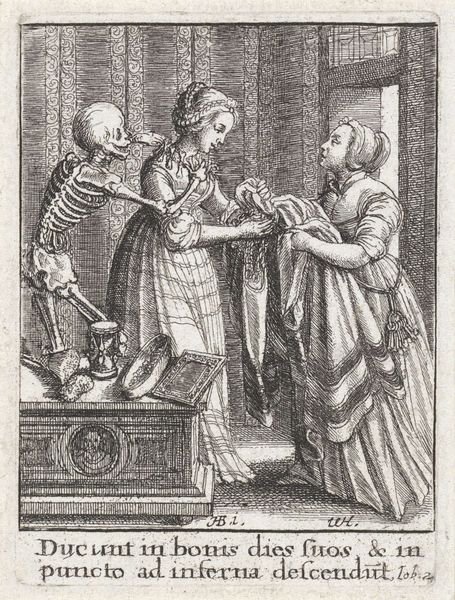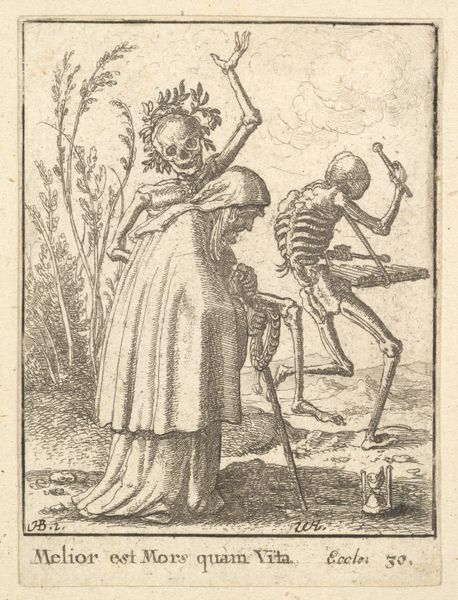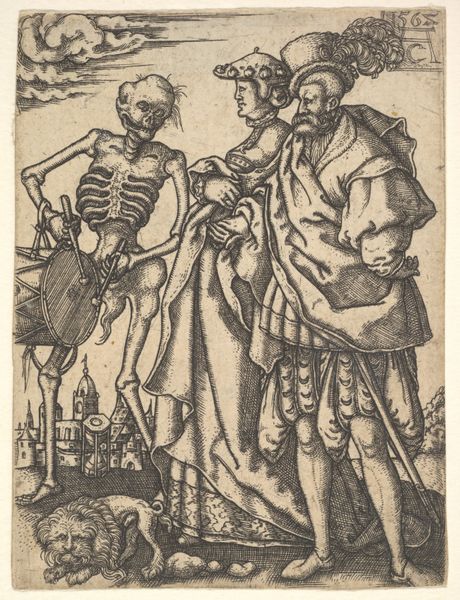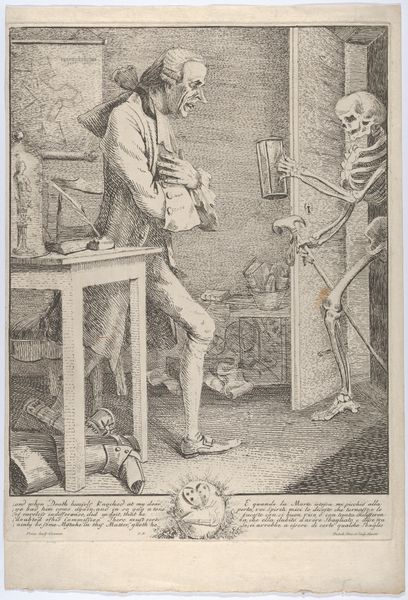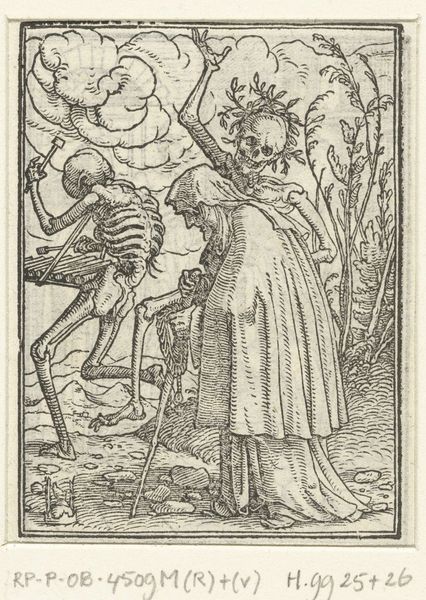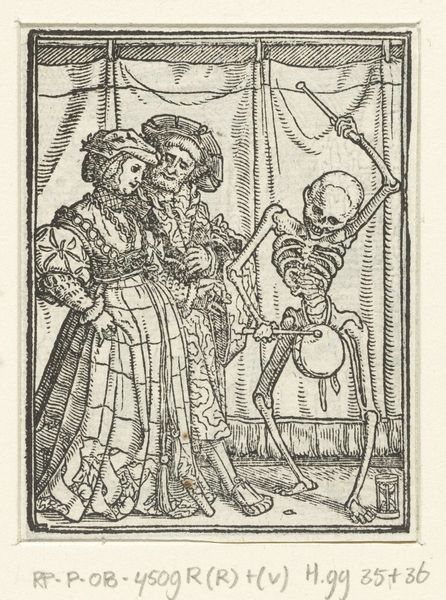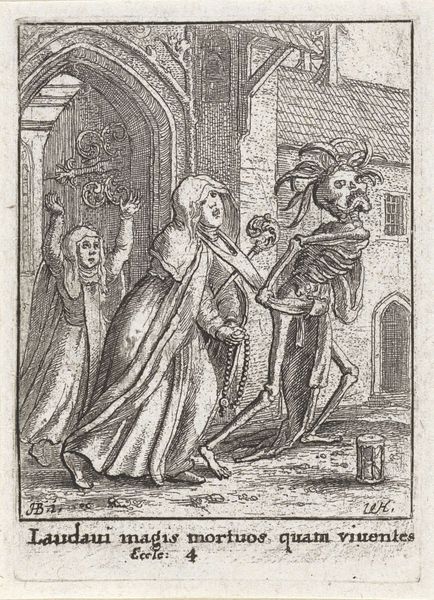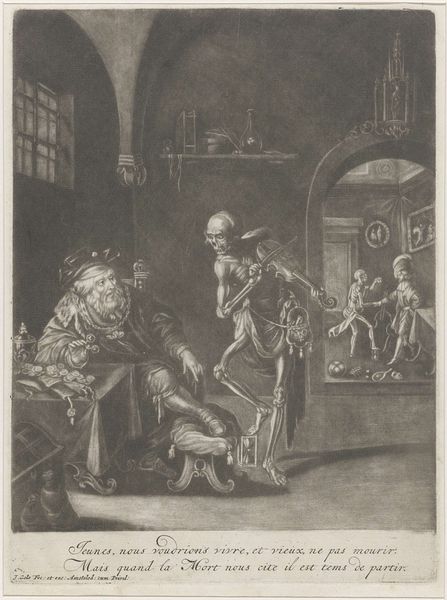
drawing, print, etching, paper
#
drawing
#
medieval
#
allegory
# print
#
etching
#
landscape
#
figuration
#
paper
#
line
#
genre-painting
Dimensions: 71 × 53 mm (sheet, trimmed within platemark)
Copyright: Public Domain
Curator: Wenceslaus Hollar created this print titled "The Bridal Pair and Death" in 1651, rendered through etching on paper. It's currently housed right here at the Art Institute of Chicago. What strikes you about it? Editor: My immediate impression is one of grim inevitability, despite the finery of the bridal pair. The stark lines of the etching enhance the almost theatrical quality of death’s entrance. Curator: Indeed, Hollar uses potent symbols. The hourglass at Death’s feet is an obvious memento mori, reminding us of life's fleeting nature. It was quite common for its symbolic use, and certainly here contributes to the allegory. It plays with vanitas traditions in painting and broader society, no? Editor: Absolutely. But seeing it presented during what should be the joyous occasion of a marriage is, I think, especially cutting. We must remember the historical context: high mortality rates were a constant presence in 17th-century life. Images such as this reflected and shaped collective anxieties about death and its disruption of social order. This was a political visual message that resonated on the everyday. Curator: And doesn’t it make you question the romantic idea of marriage, too? Death isn’t something “out there," it's actively interwoven into the most cherished aspects of human existence. What do you see of any enduring psychological weight here? Editor: Well, looking closely at the couple, one sees they appear almost oblivious, their gazes turned inward towards each other. They are framed with sumptuous attire, while Death is playing his instrument. Perhaps Hollar is speaking to humanity's capacity for denial, our ability to lose ourselves in fleeting pleasures while ignoring the ever-present reality of mortality. Are you drawn in that direction as well? Curator: I would argue he’s showing the continuity of traditions regarding images of death, isn't he? The Dance of Death imagery has been around for centuries before Hollar’s work, and speaks to universal fears and our relationship to time. It shows how long people have turned to symbols as ways of understanding existence. The dress of the bride and groom reminds of the transience of earthly existence against what remains constant in humanity. Editor: A powerful thought to consider as we leave this piece. I am more convinced of its powerful stance, now more than before! Curator: As am I. What a fine reminder of death and the historical impact images can carry with them.
Comments
No comments
Be the first to comment and join the conversation on the ultimate creative platform.

